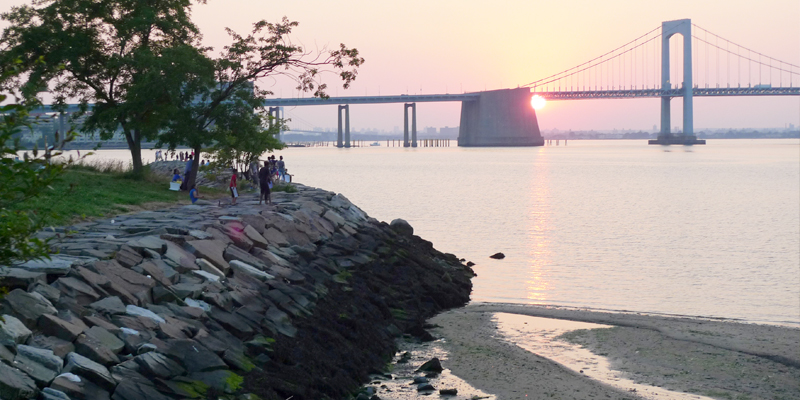Riprap Installation
Riprap, also known as “stone revetments,” is loose stone or rock used to protect shorelines from erosion. The stones absorb some of the energy of turbulent, moving water, minimizing the effects of erosion. A riprap installation can be both cost-effective and more environmentally-sensitive than bulkheads or retaining walls.
Riprap Installation Project Details
- Permits and Authorizations You’ll Need
- Project-Specific Application Requirements
The following are specific application requirements for new riprap projects.
Project Description
Your project description must explain why it is necessary to build in the chosen area, and include:
- Proof that the protective measures of the riprap installation have a reasonable probability of controlling erosion on the immediate site for at least 30 years
- A long-term maintenance program
- Proof that the construction of the riprap is not likely to cause any measurable increase in erosion at the development site or other location; and that it prevents or minimizes adverse effects to natural protective features, existing erosion protection structures, and natural resources such as significant fish and wildlife habitats.
Supporting documentation for your application must also include:
- Historic and current erosion rates on the property
- Historic and current photography
- Historic and current surveys or site plans
Guidelines on Drawing Information/Content for Riprap Projects
See NYS DEC’s Drawing Checklist for Riprap Revetment Projects for a list of what to include on each drawing listed below:
- Drawing Set Cover Sheet (recommended for projects with numerous drawings)
- Site Location & Vicinity Map
- Site Photos and Photo Location Map
- Existing Site Conditions Map
- Proposed Site/Project Plan
- Cross Sections and Details
- Agency Contacts
- Resources
Project Design
Guidelines for Design of Structures along NYS Coastlines
New York State Department of Environmental Conservation
General guidelinesProtection against Wave-based Erosion
New York State Department of Environmental Conservation
A technical guideUrban Waterfront Adaptive Strategies
New York City Department of City Planning
An in-depth study on alternative approaches to shoreline stabilization in New York City
